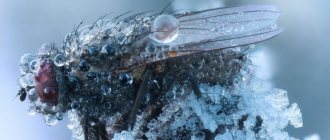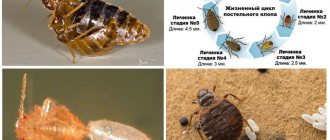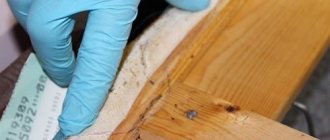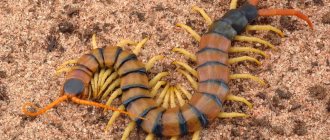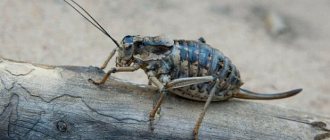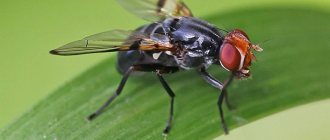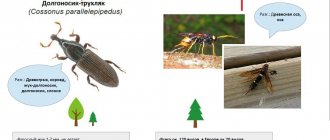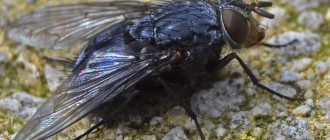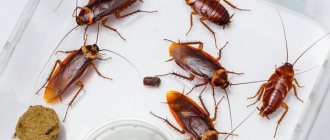Centipedes are a species of small centipedes that often live in residential buildings, causing people to be shocked and confused by their appearance. This is unpleasant, such an insect causes much more disgust and disgust than even cockroaches. Of course, it is very difficult to find a person who can live under the same roof with such a pest. Therefore, anyone who is faced with this situation will sooner or later wonder how to get rid of centipedes in the house. We will provide detailed information about this in our article.
general description
Externally, scolopendra looks like a worm, which has many limbs. Some people call these insects centipedes, but it should be understood that they are completely different types of insects. The first pair of legs of a centipede performs the function of claws, which the individual uses to capture prey. The limbs have spines soaked in poison. The length of one individual can be up to 10 cm, for example, the Crimean centipede has this size. How to get rid of this insect in the house?
Before answering the question, you should pay attention to the fact that centipedes love to live in damp and warm places, from which they go in search of food only at nightfall. In the wild, these insects live in piles of fallen leaves, construction debris and other similar places. Creeping individuals also look for the same shelters in living quarters; most often they settle in the bathroom, kitchen or toilet. Scolopendras get there through open windows and doors, as well as through cracks and crevices in sewer and ventilation systems.
Is it dangerous for humans?
In most cases, scolopendra seeks to avoid contact with humans. She only attacks if she thinks there is a risk to her life. Moreover, the threat does not have to be real. By biting, the centipede injects a toxic substance into the wound. Victims of the Crimean centipede compare the pain to being stung by several wasps at the same time. The area around the wound quickly swells and turns red. The temperature may rise. In a healthy adult, the main symptoms disappear after a few days, but the wound itself takes longer to heal.
For children and people with an increased allergic reaction to venom, the consequences of a bite are more serious. Pain in muscles and joints may appear, hallucinations begin, and suffocation may be felt. In this case, it is necessary to urgently take antihistamines and seek medical help.
Antihistamines
The possibility of accidentally getting hurt by this creature cannot be ruled out. She doesn’t have to bite, just crawl over a naked area of the body. The scolopendra's ability to secrete scalding mucus from its paws in the wild helps the predator hunt and defend itself. Two chains of red dots appear on human skin - marks from the limbs of a centipede. All this is accompanied by severe pain similar to a burn from an iron.
What attracts scolopendra?
Speaking about how to get rid of scolopendra in the house, you should also figure out what exactly attracts these insects. Thanks to this, you can avoid such a problem in the future. The following conditions are favorable for the appearance of centipedes in a residential area:
- Excessive indoor humidity. This is the most important factor in the appearance of scolopendra in the house.
- Availability of food. This should include other domestic insects that live in living quarters.
- Comfortable air temperature for scolopendra living.
Preventive actions
In order to never wonder about how to get rid of scolopendra in the house, it is necessary to take preventive measures.
- Fighting moisture. The fact is that centipedes are very afraid of lack of humidity. Drying the room is considered the most global and simplest method, since where it is dry, light and clean, insects will not grow. That is why it is necessary to regularly ventilate your apartment. You should also eliminate all plumbing breakdowns and stagnant moisture under the bathtub or sink.
- Insulation. Another important rule is to seal small gaps, cracks, cracks, and voids through which centipedes can enter the house.
- Window protection. It is best to protect windows with mosquito nets. After all, they are most often the main route for insects to enter the house.
- Fight against other domestic insects, which include ants, fleas, cockroaches, as they act as food for scolopendra.
Cleaning the area around the house from various deposits of debris, as well as from fallen leaves, which can serve as a shelter for centipedes.
Which is the best water heated towel rail to choose: manufacturer ratings
Types of water heated towel rails: which one is better to choose, manufacturer ratings and review of models. Advantages and disadvantages of towel dryers. Features and installation rules.
Ratings
- 14.08.2019
- 2322
How to get rid of scolopendra in the house?
There is no need to try to get rid of an unpleasant insect using a slipper or other improvised means. This is quite difficult to do, because the body of the centipede is covered with a very dense shell. It is also necessary to take into account the evasiveness of the insect, which makes it very difficult to hit it.
How to get rid of scolopendra in a private house? The fastest way would be to catch it with your hands, a dustpan or brush, and then take it outside, away from your home. This method is only relevant if you notice only one pest in your home. But how to get rid of scolopendras in an apartment if there are many of them? To do this, you should use the most effective and proven methods.
Area
There are more than 550 species of centipedes. Most of them live in tropical and subtropical zones. The most famous representatives of the species are the following.
- The giant scolopendra lives in South America and the Antilles. It is the largest (up to 26 cm in length) and poisonous of all representatives of the species. Contrary to popular belief, the bite of a giant scolopendra is not fatal to an adult.
- The ringed scolopendra lives in the Mediterranean, Central Asia, Southern Europe and Transcaucasia.
- Scolopendra Lucas lives in southern Europe. Has a heart-shaped head.
- The Californian scolopendra, which inhabited the south of North America and Mexico, leads a predominantly diurnal lifestyle. When bitten by a person, it can cause rhabdomyolysis - the destruction of muscle tissue cells, and acute renal failure.
- The Vietnamese scolopendra lives in Asia and Australia. Its size is up to 20 centimeters. When bitten, it releases a phosphorus-containing poison that causes severe skin burns.
- The red Chinese scolopendra lives in Eastern China and Australia. This is the most “social” centipede, not avoiding living together with its relatives. Used for medical purposes.
- Centipede waterfall, found in Thailand and Vietnam, is a twenty-centimeter amphibious waterfowl.
In addition, there are Indian tiger and blue Sumatran centipedes, named after their habitat.
Scolopendra in Russia
There are two species of centipedes living on the territory of the Russian Federation: ringed (Crimean) and Asian.
The ringed scolopendra can be found in the south of Russia, on the Black Sea coast, in Transcaucasia and Central Asia. This is a heat-loving animal that does not tolerate frost. It has a reddish color and reaches a length of 10–15 centimeters. With the help of ten pairs of legs, it reaches speeds of up to 40 cm/s. The lifespan of ringed centipedes can reach seven years. They reproduce by parthenogenesis. While expecting offspring, they are especially aggressive. The venom of the ringed scolopendra cannot kill an adult. However, death cannot be ruled out if an allergic reaction occurs, accompanied by anaphylactic shock.
In the Primorsky Territory there are single individuals of Asian centipedes, which are widespread in more southern regions. This centipede is up to 20 centimeters long. There is only one known case of death when it bit a person.
The flycatcher, a predatory centipede that is often confused with the centipede, also lives in Crimea and the Black Sea coast. It often penetrates a person’s home. Its prey is flies, moths, and ants. For people, it is practically harmless, since its jaws are not able to bite through the skin. Unlike scolopendra, it can hunt in the daytime and is better adapted to lower temperatures.
Chemicals
How to get rid of scolopendra in a private house or apartment? Chemical agents are considered the most effective in the fight against insects. Most often, broad-spectrum drugs are used, which are designed to destroy various harmful insects. This should include:
- "Medilis Cyper".
- "Dichlorvos".
- "Raid".
- Starex.
- Henkel Kombat.
Before getting rid of scolopendra using insecticidal preparations, you need to put on personal protective equipment: rubber gloves, a respirator, and the most closed clothing possible.
Reasons for appearance
This insect, like many others, prefers places with high humidity. As a rule, they appear in basements, where it is damp and warm, and there is enough food for the flycatcher. Gradually, flycatchers move into residents’ apartments in search of food and comfortable conditions for their existence.
The flycatcher is mainly attracted by the abundance of food. Its diet includes flies, cockroaches, bedbugs, fleas, moths and other small insects, which is why this creature is popularly called a flycatcher.
Traditional methods
You can also fight the pest using folk remedies. For these purposes, some people take the well-known boric acid, which is used in the fight against many household insects. However, it is worth paying attention to the fact that scolopendra is considered a predator, so it cannot be said with certainty that boron powder will attract its attention. If scolopendra gets into the apartment through the ventilation, then the grate must be treated with boric acid.
Another unusual folk method of fighting insects is the preparation of food baits based on chemicals. For example, if you have Prussians at home, you can make balls to kill cockroaches. When a scolopendra eats poisoned food, it itself will die.
Setting up a terrarium
In order for your new pet to live happily ever after, no special conditions are required - a modest terrarium is quite enough. Spiders are gloomy ascetics and spend most of the time allotted for themselves sitting in one place, only occasionally making “jogs” to stretch their legs. A cozy spider house with optimal dimensions is a terrarium equal to two lengths of the full span of its legs, that is, even the largest spider will feel great in a living space of 40x40cm.
But do not forget that spiders can move quite well on vertical surfaces, so the main thing is a reliable lid that will close well and keep the poisonous pet in its rightful square centimeters.
Let's move on to creating optimal conditions for the spider.
- Substrate. It is necessary to “cover the floor” in the spider’s home with a special flooring. The ideal option is vermiculite, a special mineral rock that is used in crop production. Layer - from 3 to 5 cm. If you can’t find one, you can also use coconut substrate or regular peat. By the way, it is recommended to mix the latter with sphagnum moss. As a last resort, when there is absolutely nothing, garden soil will do (only from a flower shop and in no case from the nearest flower bed!) or soil used for growing indoor plants. However, it is advisable to use this option for a short time and try to quickly replace it with a substrate more suitable for the spider.
- Temperature. Spiders are thermophilic and prefer to stay in a temperature range that will be close to +22…28°C. These pets are immune to a slight short-term decrease in temperature, but it is undesirable to abuse such situations. But at the same time, it is not recommended to overheat the terrarium. This situation is especially dangerous for well-fed animals, in which the process of rotting undigested food may begin in the stomach.
- Lighting. For spiders, which are nocturnal inhabitants, the natural light in the room is sufficient. No additional sources are needed. Moreover, direct light from a lamp can quickly destroy this fragile creature.
- Humidity. A drinking bowl and the right substrate help to some extent to ensure its optimal level. If the readings on the hygrometer are too low, then from time to time you will have to irrigate the terrarium with water from a spray bottle. But again, high humidity is dangerous, so when buying a spider, immediately find out from the seller what humidity is needed specifically for this species.
- Filling. For a spider in a terrarium, the main thing is a shelter in which it can hide during daylight hours, and if you keep a burrowing species, then a “house” is simply a must for it. Without it, such a pet will be in constant stress. Setting up such a shelter is very simple - you can lean a piece of bark, a coconut shell against the wall, put an inverted half of a flower pot in the corner, etc. Everything else, such as decorative driftwood, artificial plants and other similar elements, is unnecessary. Spiders are completely indifferent to them, so you purchase and install such accessories exclusively for yourself.
Specialized services
If there are a large number of scolopendras in your living space, then it is best to seek help from a specialized service, which employs employees who use professional means to solve this problem. It should be noted that this method of insect control is the most effective at the moment. However, this service costs a lot of money.
Precautionary measures
To avoid being bitten by this insect, you need to carefully inspect your bed before going to bed. You should pay attention to the fact that small centipedes can hide even in clothes, so you need to shake things out each time before putting them on.
As mentioned earlier, if you use chemicals yourself, you must use personal protective equipment. After you kill the insects, you should also ventilate the living space and wipe the surfaces in the house with a damp cloth.
Benefits and harms
In fact, it is a useful creature that helps humans destroy many harmful insects and parasites.
Unfortunately, its frightening appearance frightens a person, and such proximity in the home is useless.
The insect's appearance creates panic in all residents, which leads to disturbances in a stable mental state, and this leads to the fact that a person cannot relax fully after a hard day. In addition, children and adults, especially women, are afraid to get up at night for natural needs. Sleep is lost because people think that the flycatcher can climb into the bed or fall from above. In fact, these are just phobias, not supported by anything.
